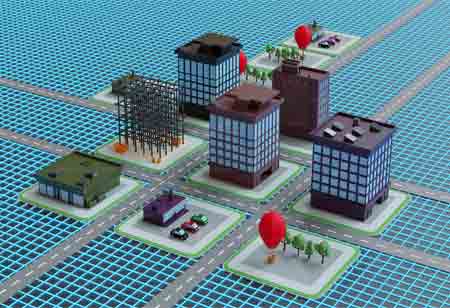Thank you for Subscribing to Gov Business Review Weekly Brief
The Future of Transportation: Innovations Driving Tomorrow's Mobility
Innovative technologies like autonomous vehicles, hyperloop systems, electric and hybrid vehicles, urban air mobility, smart infrastructure, and micro-mobility solutions are set to revolutionize transportation

By
Gov Business Review | Thursday, December 05, 2024
Stay ahead of the industry with exclusive feature stories on the top companies, expert insights and the latest news delivered straight to your inbox. Subscribe today.
Innovative technologies like autonomous vehicles, hyperloop systems, electric and hybrid vehicles, urban air mobility, smart infrastructure, and micro-mobility solutions are set to revolutionize transportation and create a more efficient world.
Fremont, CA: The transportation sector is on the brink of a revolutionary transformation. As we look towards the future, technological advancements promise to reshape how we move people and goods. From autonomous vehicles to hyperloop systems, transportation innovations are set to make travel faster, safer, and more efficient. This article explores the key technologies and trends expected to define transportation's future.
Autonomous Vehicles
Autonomous vehicles (AVs) are among the most revolutionary aspects of transportation innovation. They depend on the use of advanced sensors, ML, and AI to enable them to navigate about with little or no human intervention. Companies are advancing in developing autonomous vehicles (AVs) to minimize human error-related accidents and improve traffic flow. The widespread adoption of AVs could also lead to more effective road space usage and decreased congestion.
Hyperloop Systems
Hyperloop technology aims to revolutionize long-distance travel. This system involves passenger pods traveling at high speeds through low-pressure tubes, significantly reducing travel time between cities. Companies are working on making this futuristic mode of transport a reality. If successful, hyperloop systems could offer a faster, more sustainable alternative to air travel.
Electric and Hybrid Vehicles
Electric and hybrid cars are slowly becoming mainstream as the world focuses on lowering carbon emissions. In electric cars, batteries produce no emissions and bring into the market an environmentally friendly alternative vehicle as compared to conventional gasoline-powered cars. Hybrid vehicles, which find a unitary combination of an IC engine and electric motor inside the vehicle, provide better fuel efficiency and reduced emissions. Governments and automakers have invested considerably in EV infrastructure and technology to address this change.
Urban Air Mobility
Urban air mobility (UAM) involves using small, electric aircraft for short-distance travel within cities. These aircraft, often called flying taxis, are designed to alleviate urban congestion and provide a faster mode of transport. Companies like Joby Aviation and Volocopter are developing UAM solutions that could transform urban transportation by offering an alternative to ground-based travel.
Smart Infrastructure
The future of transportation is not just about vehicles but also about the infrastructure that supports them. Smart infrastructure includes technologies like connected traffic lights, smart roads, and intelligent transportation systems communicating with vehicles to improve traffic flow and enhance safety. These systems use data from various sources to make real-time adjustments, reducing congestion and improving the overall efficiency of transportation networks.
Micro-mobility Solutions
Many cities are experiencing the proliferation of electric scooters and bikes as micro-mobility solutions in urban areas. These lightweight, small, convenient vehicles are poised to navigate crowded city streets, provide convenience, and reduce car dependence for short trips. Companies have taken the lead in offering shared micro-mobility services, complementing public transportation, and reducing the need for cars for short trips.
More in News






